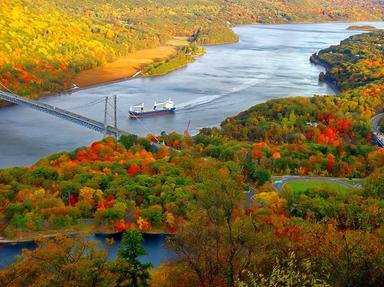Quiz Answer Key and Fun Facts
1. The Amazon, the world's largest river in terms of discharge volume, travels through six countries. How many national capitals are located on this river?
2. The Nile, the longest river in the world, passing through nine countries, has three national capitals located on the river itself. Cairo and Khartoum are two, what is the third?
3. The Congo is the second longest river in Africa and second in the world behind the Amazon in terms of discharge volume. It is unique in that two national capitals are situated on either side of the banks overlooking each other. Which two cities are these?
4. The Pearl River is not as large as other Chinese rivers such as the Yangstze or the Yellow Rivers but the Pearl River Delta is one of the most populous regions in the world. What are the major urban areas on this river?
5. The Sumida River is the river which runs through which Asian national capital?
6. The Mekong is an important river in Southeast Asia. It travels through six countries (China, Myanmar, Laos, Thailand, Cambodia, and Vietnam) before it enters the South China Sea. What national capitals are located on this river?
7. The capital of Australia, Canberra, is on Lake Burley-Griffin yet this artificial lake is part of a natural river that ran through the site. What is the name of the river?
8. The Danube is the second longest river in Europe. How many national capitals are located on its banks?
9. Turning to North America, what do the state/provincial capitals of Columbus, Sacramento, Winnipeg and Ottawa have in common?
10. The Mississippi-Missouri River is the most important river system in the United States though the Missouri is slightly longer. Which of the two rivers has the most US State capitals located on its banks?
Source: Author
1nn1
This quiz was reviewed by FunTrivia editor
agony before going online.
Any errors found in FunTrivia content are routinely corrected through our feedback system.
